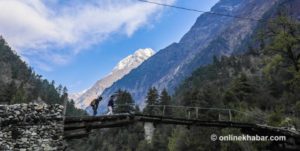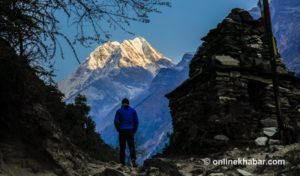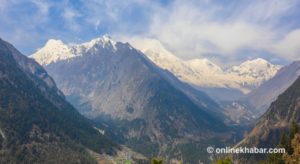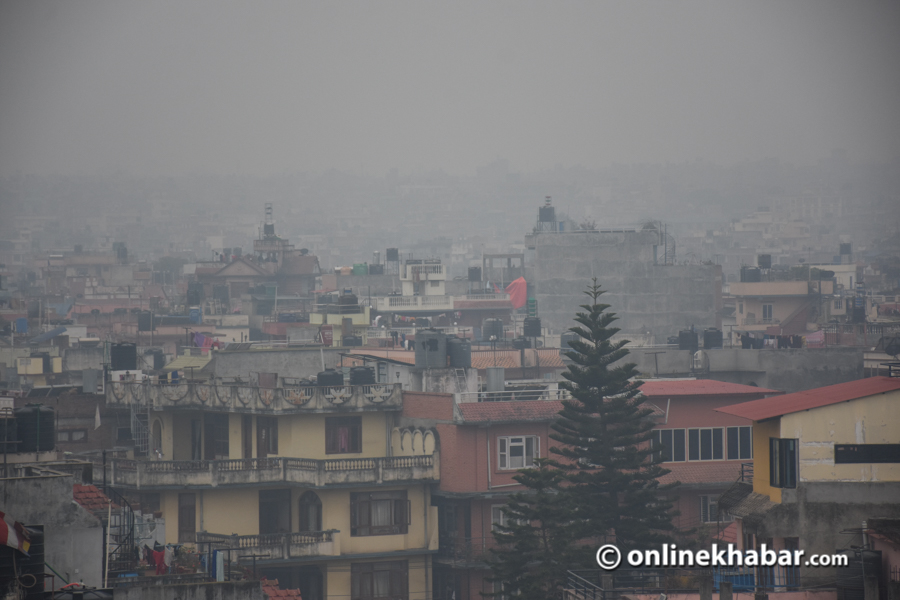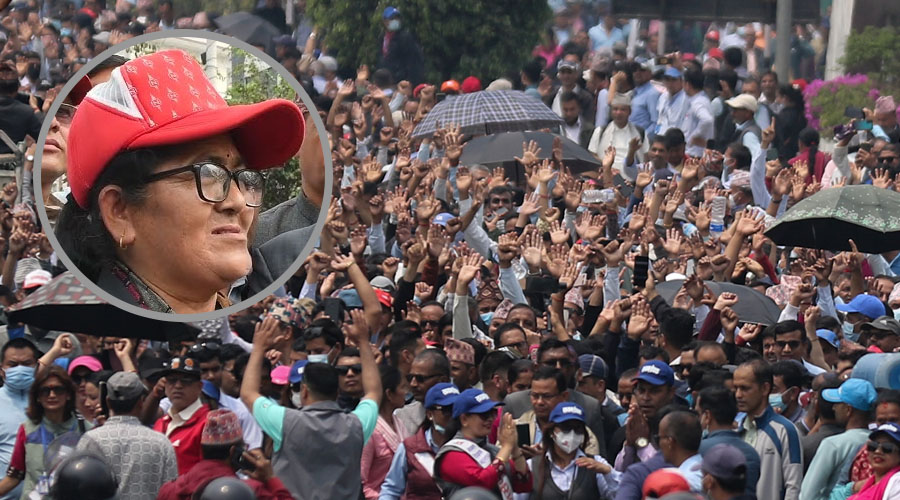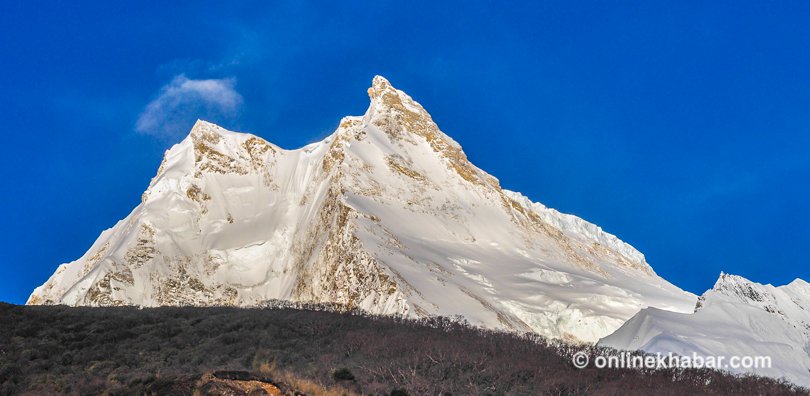
In the Manaslu region of Nepal, locals demand that helicopter rides be accessible and affordable for them, not only for tourists. They have taken the demand to the streets in protest against helicopter services. The locals have accused that these services are inaccessible and unaffordable for them, who rely on them in emergencies and transport commodities daily.
With this protest, the residents of Manaslu hope to highlight the growing differences between luxury tourism and the needs of those who call this mountainous region here.
The life of people in Manaslu
Located in the Himalayas of Nepal, the Manaslu TSUM Valley region is one of the most remote and challenging places to live. Its high altitudes, rugged terrains, and lack of developed infrastructure make transportation difficult. For locals, the trails that tourists wander around for adventure are the only path to access basic needs, like food and medical services. Without proper roadways, residents are compelled to travel on foot.
With the flourishing tourism, more helicopter services have been introduced, especially to accommodate tourists who prefer quicker, more comfortable access to the region. This growth in luxury trekking has had mixed effects; while the influx of tourists supports economic growth, it also raises an issue related to helicopters, which remain financially out of reach for many locals.
The rise of helicopter tourism
Helicopter tourism is booming in Nepal’s Manaslu region. For visitors, helicopter rides offer a fast and scenic alternative to arduous days of trekking, making it easier to reach areas with spectacular views. Though the helicopter rides are pricey by local standards, they have been marketed as part of the Himalayan luxury experience, adding convenience and adventure to a trek that otherwise demands days of endurance.
However, as tourism revenues climb, questions arise about the real benefits for residents who struggle to access these same services. For them, helicopter rides are simply out of reach, even in emergencies.
The struggles and frustrations of residents
For Manaslu’s residents, the frustration has been building. Although helicopters fly frequently over their villages, few, if any, are accessible for locals, especially during emergencies. When a resident needs medical help or need to reach a hospital quickly, they are left with limited options. Many residents have recounted harrowing experiences of having to walk for hours or even days to get medical assistance, all while helicopters transport tourists over their heads.
One local protester shared, “We have seen so many helicopters, but we feel they are only for the rich tourists. If we have an emergency, even if we are willing to pay a reasonable amount, we are often turned away because we can’t match the tourists’ rates.” Many locals feel that while tourism has brought helicopters to their skies, it hasn’t brought them the benefits they expected
Economic disparities and access limitations
Helicopter rides in Manaslu are priced with tourists in mind, with rates that locals simply cannot afford. While a tourist might pay several hundred dollars for a single ride, such costs are prohibitive for many Manaslu residents whose incomes are modest in comparison. This disparity has led to a feeling of exclusion, where the tourism industry seems to prioritize profit over the needs of the community.
Locals argue that the lack of affordable flights prevents them from accessing what should have been shared resources. “Tourism should help us, not divide us,” a community leader noted. “These helicopters should not just be a luxury for foreigners; they should be available to help us too.” The protests are a direct appeal to the government and helicopter companies to recognise that while tourism is important, the well-being of the local population must also be a priority.
Calls for fair pricing and emergency options
Through their protests, residents of Manaslu are asking for a change. Their demands are straightforward: either make helicopter services more accessible and affordable for locals or dedicate some flights specifically for emergency use. Locals believe that a fair pricing policy could create a balance between tourism and community needs without entirely shutting off the benefits that tourists bring.
Suggestions for improvement include implementing discounted rates for locals, particularly in emergencies, or establishing a government-regulated subsidy program. If helicopter companies were to allocate a few seats or flights at lower costs for local residents, it would bridge the gap between luxury tourism and the necessities of the community. Some protesters have proposed designating specific helicopters as community transports, available for urgent situations.
Responses from helicopter operators and authorities
So far, there has been little formal response from helicopter operators or local tourism authorities. However, the protests have caught the attention of Nepal’s broader public. If authorities wish to maintain a positive relationship between tourists and residents, these concerns must be addressed to strengthen the relationship between locals and the tourism industry.
Balancing tourism and local needs
The protests in Manaslu highlight growing tensions in the region, where tourism has turned remote areas into luxury destinations. While tourism generates employment and revenue, the imbalance in resource allocation has begun to disrupt the lives of locals.
For residents, tourism should be about shared benefits rather than exclusive services. They hope that tourism leaders and helicopter operators will use this moment to create a model of sustainable tourism from which both visitors and locals can benefit.




